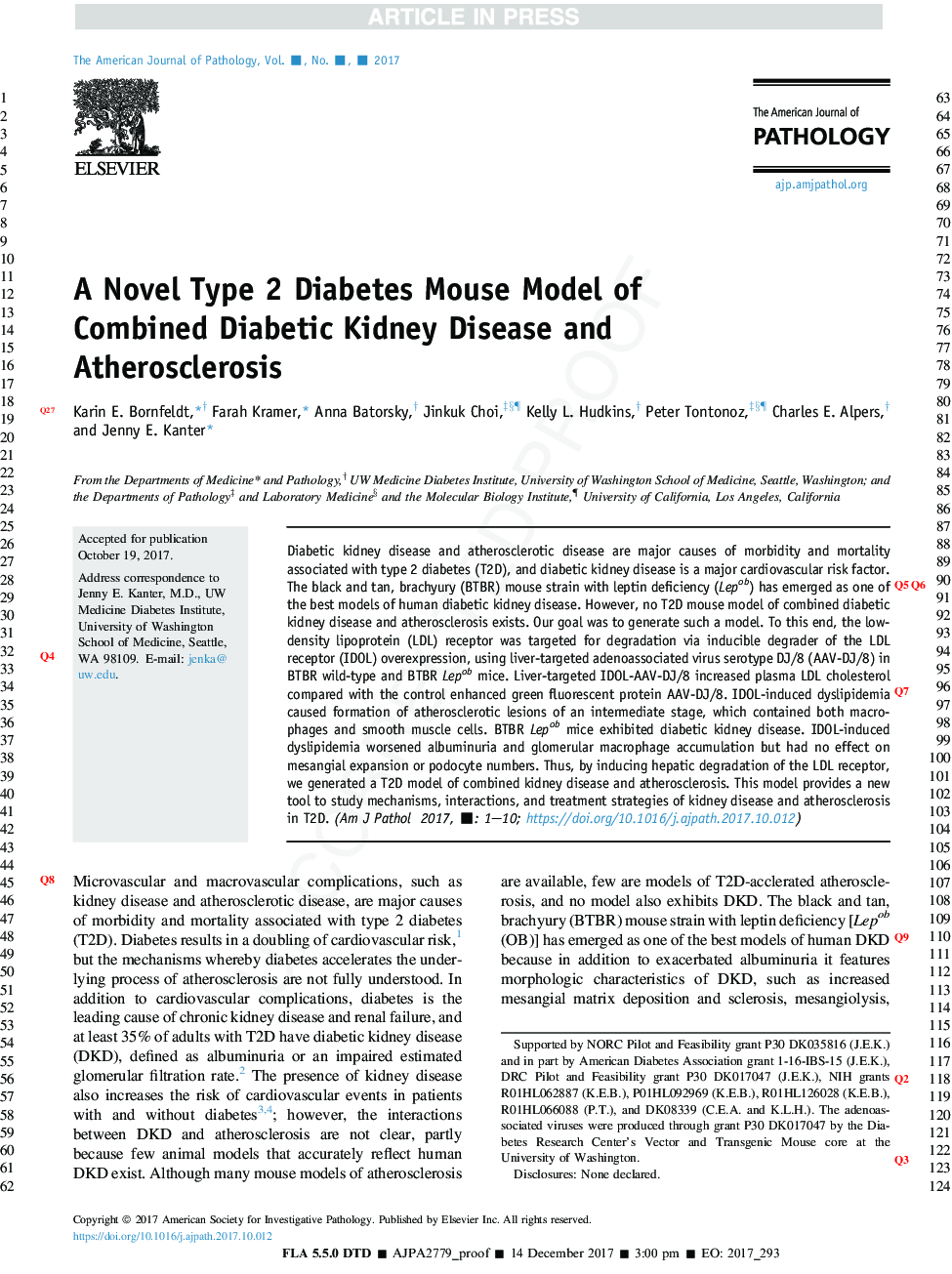| Article ID | Journal | Published Year | Pages | File Type |
|---|---|---|---|---|
| 8652048 | The American Journal of Pathology | 2018 | 11 Pages |
Abstract
Diabetic kidney disease and atherosclerotic disease are major causes of morbidity and mortality associated with type 2 diabetes (T2D), and diabetic kidney disease is a major cardiovascular risk factor. The black and tan, brachyury (BTBR) mouse strain with leptin deficiency (Lepob) has emerged as one of the best models of human diabetic kidney disease. However, no T2D mouse model of combined diabetic kidney disease and atherosclerosis exists. Our goal was to generate such a model. To this end, the low-density lipoprotein (LDL) receptor was targeted for degradation via inducible degrader of the LDL receptor (IDOL) overexpression, using liver-targeted adenoassociated virus serotype DJ/8 (AAV-DJ/8) in BTBR wild-type and BTBR Lepob mice. Liver-targeted IDOL-AAV-DJ/8 increased plasma LDL cholesterol compared with the control enhanced green fluorescent protein AAV-DJ/8. IDOL-induced dyslipidemia caused formation of atherosclerotic lesions of an intermediate stage, which contained both macrophages and smooth muscle cells. BTBR Lepob mice exhibited diabetic kidney disease. IDOL-induced dyslipidemia worsened albuminuria and glomerular macrophage accumulation but had no effect on mesangial expansion or podocyte numbers. Thus, by inducing hepatic degradation of the LDL receptor, we generated a T2D model of combined kidney disease and atherosclerosis. This model provides a new tool to study mechanisms, interactions, and treatment strategies of kidney disease and atherosclerosis in T2D.
Related Topics
Health Sciences
Medicine and Dentistry
Cardiology and Cardiovascular Medicine
Authors
Karin E. Bornfeldt, Farah Kramer, Anna Batorsky, Jinkuk Choi, Kelly L. Hudkins, Peter Tontonoz, Charles E. Alpers, Jenny E. Kanter,
